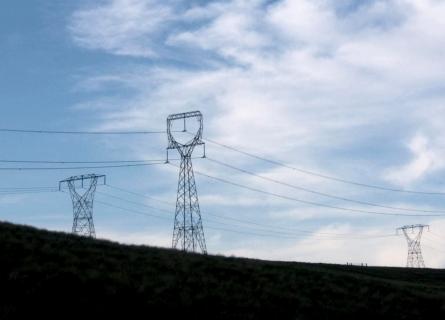
Riding the renewables wave: cheaper technology, higher targets and more investment
The energy transition is set to propel renewables to new heights sooner than expected, but investing in the right developer to take advantage of this opportunity requires careful consideration.
Renewable energy is the fastest growing segment in the energy sector today, as the transition to clean energy charges ahead. In 2019, renewables, excluding large hydro, grew globally by 194GW and around $280billion was invested, primarily in solar and wind 1 . Spectacular development in the cost competitiveness of wind and solar has meant that renewables are getting cheaper - a trend that is set to continue, with costs set to fall further. Official renewable energy targets for 2030 imply an estimated 721GW of new solar, wind and non-hydro renewable capacity will be needed 2 and that total will increase as more governments write targets into national policy.
Increasing renewables targets alongside falling renewables costs are the key dynamic driving support scheme design, as governments look to minimise the costs of meeting 2030 targets. Competitive auctions require that renewables developers make considerable effort to position their projects favourably.
In merchant markets like the Nordics, renewables enter the market without support schemes but with commercial arrangements such as PPAs to mitigate the merchant risk and support project financing. Typically, PPAs are struck with utilities however increasingly also with industrial companies like Norsk Hydro 3 or corporates like Google 4 . While volumes have been growing, the story is still one of numerous developers chasing a limited set of offtakers, meaning that the price level needs to be attractive as part of a long term hedging strategy. This leads to a level of competition between developers (and investors) to find an offtake agreement that provides a reasonable business case and bankable project.
Recent developments show a clear up shift in the need for green electricity. Countries targeting carbon neutrality early include Sweden by 2045, Finland by 2035 and Denmark, with a cut emissions of 70% by 2030. The implication of this is that the industrial sectors must also decarbonise fast, which for many means removing fossil fuels from feedstock and increasing demand for green electricity. For example, the recently announced H2Green Steel project in Northern Sweden has a 800MW electrolysis unit to provide green hydrogen for the process 5 . Based on recent analysis by AFRY, the carbon neutrality roadmap of Finland envisages, in a conservative scenario, an increase of nearly 30% 6 in national electricity demand by 2035, largely driven by the electrification of industry.
Another strong driver is the rise of sustainable funds and ESG investors, with many corporates reassessing their sourcing strategy based on renewables commitments and many companies that missed out on the first round of renewables projects looking to enter the market, sometimes paying a high price to do so 7 .
This combination of drivers means that renewable developers have both the opportunity and the position to ride this wave. There are questions about the best way to harness industrial demand for projects and how this will interact with developers – should industrials remain pure offtakers? Should they develop partnerships and take ownership via joint ventures?
Whatever the model, this is a huge opportunity for those renewables developers that can bring great projects to market at the scale required to meet these ambitions. AFRY works on tens of transactions per year related to renewables developers. While we agree that the clear demand for new capacity paints a picture of golden times ahead for the developers, what makes a successful developer is more nuanced.
The developer business is about understanding the value levers at your disposal and exercising those levers to maximise returns.
- A common theme for all developers, regardless of their business model, is the need for excellence in development and management of the project pipeline from origination to delivery. Top renewables developers run the development process efficiently and ruthlessly. Top developers are always deep in the local market with established physical channels to important local stakeholders. However it is the combination of local presence with exceptional pipeline development and management to get projects over the line that makes them stand out. The developer business is at its core about the people – attracting, growing and retaining the best talent and then harnessing this in the right way drives top developers to outperform competition and in our view is almost the key precondition for success.
- For developers looking to sell projects to partners or investors, understanding the buyers needs and reflecting them in the transaction envelope can deliver above average returns. This includes standard elements like quality of projects and construction delivery, but also options to provide services along the project lifecycle such as O+M. In markets where renewables are merchant, tools to manage merchant risk are increasingly important. For example, PPAs are generally required to support project finance; developers that support investors to put PPAs in place help to give comfort on key questions around project revenues. When the offtaker or partner is an industrial, working to agree on route to market or solve other issues like offtake profile and responsibility for balancing also clarifies important value drivers.
The key question in the emerging environment is how to manage the shift that the new wave of investments raises for the current business model of developers:
- Will only the biggest be able to survive/harvest extra value, as the big industrials will be chasing solid portfolios?
- How can renewables developers quickly scale their business, given their business is essentially a local business?
- To what extent is scaling about picking the right strategic option vs. attracting key people?
- Which will be the key markets down the road? Those that are already at the merchant stage, or those yet to be merchant?
For the developers that get this right, the rewards will be substantial. However not all developers are equal and building an outperforming business will require careful and focused investment.

International transaction services
Footnotes
- 1. Frankfurt School-UNEP Centre/BNEF. 2020. Global Trends in Renewable Energy Investment 2020 https://www.fs-unep-centre.org/global-trends-in-renewable-energy-invest… ↩
- 2. Ibid ↩
- 3. https://windeurope.org/newsroom/news/new-ground-breaking-ppa-deals-sign… ↩
- 4. https://gwec.net/google-signs-190-mw-of-wind-ppas-in-finland/ ↩
- 5. H2GreenSteel ↩
- 6. https://energia.fi/files/5064/Taustaraportti_-_Finnish_Energy_Low_carbo… ↩
- 7. https://afry.com/en/insight/who-will-pay-price-entering-uk-offshore-win… ↩





